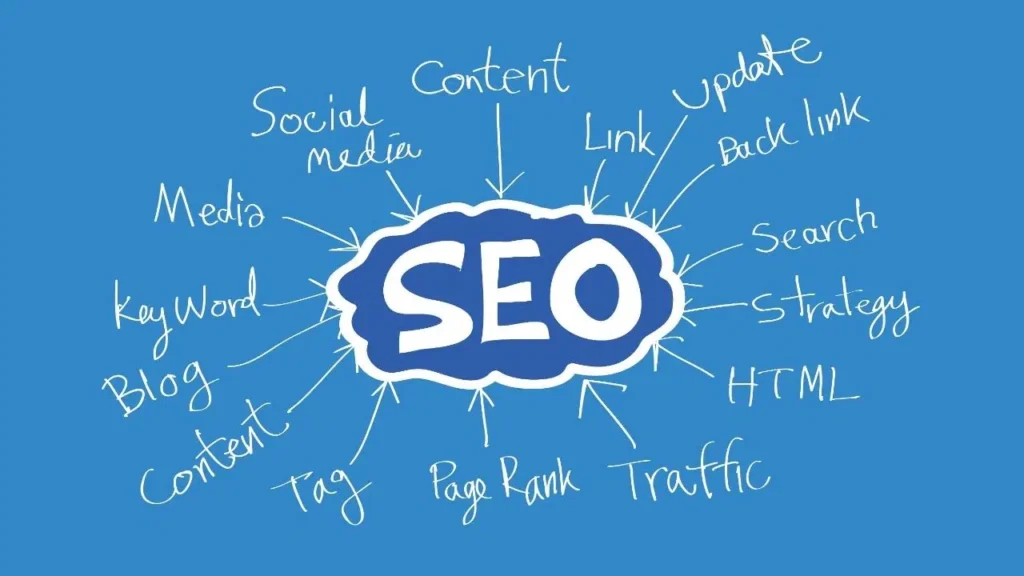As the owner of a small business, you are always concerned with what the future holds for your company. That’s why you have decided to take your business online. Maybe you’ve been running your business online from the start. What you do know is that small business marketing is important—if not even more important—in the online realm.
Indeed, small business marketing can make a difference for any online business. Some say that with the right tactics, a small online business can grow its revenue by even 4200%. Hearing such numbers might make you wonder about the budget required for such growth.

Some may say that a large budget is required for such growth. For example, some small online businesses invest up to $15,000 per month for their small business marketing efforts. That is, indeed, a large sum, especially for a small company that may not have the budget for such investments.
However, are such investments a requirement?
Different business niches require different marketing budgets. That’s common sense. However, we can still talk about averages when it comes to the money needed in any small business marketing strategy. What does the data say?
For your general marketing budget, most experts recommend allocating 7–10% of your yearly revenue. For example, if your company’s annual revenue is $100,000, then you should roughly allocate $10,000 per year. That means slightly above $800 each month for the coming year.
Is that enough? In the United States and Western Europe, such a budget would not even cover the monthly wage of a marketing manager, let alone investments in your company’s expansion.
According to data, for a basic digital presence, $800 is enough to have a voice online. It is, in fact, recommended for startups and local businesses. It is the type of marketing effort that is foundational for such companies. Even established small online businesses can have a budget that doesn’t exceed $800 per month.
Just to give you a general picture, these are the monthly budgets that you should consider for your small business marketing strategies.

Basic Digital Presence: $600–$1,200 per month is suitable for startups or local businesses needing a foundational online presence.
Established Small Businesses: $600–$3,600 per month covers website management, SEO, social media, paid ads, and content marketing.
Aggressive Growth: For businesses aiming for significant growth, budgets can range from $1,000–$2,500 per month (intermediate) up to $5,000–$15,000 per month for highly competitive markets or rapid expansion plans.
A small online business can invest less than $1,000 monthly and still have a content marketing strategy and an SEO budget that supports growth.
This is important for your business journey. What any small online business needs is content. As you have probably already heard, content is king. This means that with great content, you can take a small, ambitious startup and transform it into a success story.
Can you invest less than $1,000 in your marketing and still have business success online? If you can craft the content yourself, you don’t need to hire a freelance writer. If you can do your own SEO research and implement the best SEO practices, then you don’t need an SEO specialist. When it comes to web design, many affordable solutions exist today. WordPress themes are often affordable, and most of the WordPress widgets are too. Social media, again, if you have the right strategy and enough time to craft compelling posts and attract new prospects, then you can reduce the cost of your small business marketing strategy even further—perhaps under $800.
What you will have to pay for are:
- Paid search on Google and other search engines
- Promotion of your business on social media
- Various widgets, apps, and software important for your company
With a budget of roughly $800, you can cover these expenses. The rest that matters is content.
No matter how much money you pour into your small business marketing strategy, you still need content to attract prospects. A paid ad on Facebook or a paid search on Google will bring the user to your social media or website, but the content and experience the prospect finds there will determine whether that person becomes a client.
In other words, if your online content is of poor quality, the prospect will simply move on to another platform.
That’s why small businesses around the world hire full-time social media managers, and that’s why content marketers are so valued in today’s digital world.
As a matter of fact, 82% of companies use content marketing as part of their strategy, with 73% of B2B and 70% of B2C marketers leveraging it. Moreover, 93% of B2B marketers and 86% of B2C marketers use content marketing, according to recent industry reports.
Speaking about return on investment (ROI), statistics show that 14% of businesses claim that in 2024 their content marketing efforts yielded the highest ROI. Also, 45% of marketing and media leaders plan to increase their content budget in the next twelve months.
What you should keep in mind from the data is this: 80% of small business owners write their own content. This means that with a clear vision of your goals and a bit of writing talent, you can take advantage of what is still probably the most important marketing tool for small online businesses: the blog.
Indeed, blogging is the best practice for small business marketing. Almost every company in the United States has a website. But why is a blog important?

A company blog can be essential for several reasons. For starters, a company blog can be the foundation for implementing an SEO strategy. Each new blog post creates an indexed page, increasing your chances of appearing in search engine results and improving your SEO ranking. This is important, given that companies with blogs have 55% more website traffic than those without.
People use search engines daily, and ranking higher by using the best SEO techniques can drastically increase your online presence and boost your brand’s reputation.
What’s more, 68% of people believe that blogs make a website more credible. This builds authority in the eyes of your clients and prospects—another great reason to start blogging as part of your small business marketing strategy.
However, keep in mind that content remains king. You can have a blog, and people can find it through SEO. Still, if the prospects do not like what they find or if they are not satisfied with the experience, they will simply leave and look elsewhere.
That’s where content matters. Well-crafted, thoroughly researched content will keep visitors on your website. That’s why it’s important to be aware of the best blogging practices for small business marketing.
While you don’t have to be too narrow about the topics you cover on your company’s blog, keeping your content relevant to your industry is important.
For example, if you’re blogging for a pet store, you need to write about topics relevant to that specific industry. Write about the most nutritious food for small dogs or the best food options for cats. You can cover the benefits of exercise for domestic animals. You can explore a variety of topics, but they must be connected to animals or the pet industry.
Remember, a person searching for information related to pets will not revisit your website if it turns out to be about cars, computers, or politics.
As mentioned earlier, most of your visitors will arrive on your website through search engines. That’s why it’s important to have a good SEO strategy for your small online business.
Any solid SEO strategy begins with keyword research. You must target those keywords that people are likely to search for online. Once you know what terms they’re using, it’s time to make the most of them.

Keywords are not always just single words. Some are called long-tail keywords—longer, specific phrases people use in their searches. If you can select the right long-tail keywords, you’ll be able to attract more visitors to your website.
You’ve attracted visitors with your SEO strategy. Now you need to keep them as loyal readers. You need to make them enjoy your content and want to come back for more.
That’s why you need to create content that’s relevant and tailored to the audience’s needs. For that, you need to know who your target audience is, who your ideal reader is, and have a good command of the English language.
Of course, good writing takes time and regular practice. There’s always the option of hiring a freelance writer to help with that.
What beats writing talent in the blogging world is consistency. Your audience leads busy lives. They want content that is clear and solution-oriented. That’s why it’s better to be consistent than exceptional. It’s better to publish three solid articles each week, regularly and on time, than to write a brilliant article now and then.
That’s why having a publishing calendar is crucial for blogging. Be sure to post regularly, on the same day of the week and, ideally, at the same hour.
The same goes for your business’s newsletter. If you want to send valuable content to your subscribers, consistency is more important than brilliance.
Most people appreciate order and will respect you more if you respect their time.
Reading online is not the same as reading a novel. People on the internet have shorter attention spans and often scan an article rather than read it from beginning to end.
That’s why visuals are important for your small business marketing strategy. The right visuals can help keep visitors on your website longer, improve your bounce rate, and make readers feel their time was well spent.
What kind of visuals should you include in your blog posts? Images, videos, and infographics are three types of media readers often appreciate.
As they say, a picture is worth a thousand words, and this is certainly true in blogging. For example, adding photos of animals to a pet store blog brings your content to life and makes readers more likely to return.
Video content has become increasingly popular in recent years. This is especially true in the world of copywriting, where video sales letters are becoming more common because marketers claim they generate more conversions.
Just make sure your videos are relevant to the blog post. If a post is about caring for small dogs, then a video showing how to do that is your best option.
One reason you’re engaging in small business marketing is to generate more sales. For this, you need to develop and refine your copywriting skills. One thing you can do in your blogging strategy is include a call to action in every blog post you publish.
What is a CTA? It’s a way to tell (or instruct) readers what to do next, because many readers may feel overwhelmed or unsure of what to do.
In the online world, keeping a prospect’s attention is challenging. That’s why CTAs are essential for guiding users. You’re simply telling them what to do, helping enhance their experience on your site and grow your business.

On a pet shop’s website, you can guide readers to explore other articles. This keeps them on your site longer, exposing them to more content. You can also invite them to subscribe to your newsletter. Building your email list is valuable because there are many ways to leverage it for marketing.
And finally, you can ask readers to buy something from your store. That’s the original intent of a CTA—to turn a prospect into a client. That’s the ultimate goal of any marketing strategy, and blogging can help you achieve it.
Of course, if you want more visitors to read your blog and become loyal followers, you need to promote it.
Be present on social media and share each new article whenever you can. Facebook, Instagram, LinkedIn, and X (formerly Twitter) are just some of the platforms you can use.
Don’t forget to add social sharing buttons to your blog. Make it easy for readers to share your content with a single click. Every person who sees your content online matters.
One last thing about social media: don’t underestimate the comment sections. Find posts relevant to your topic and share your articles there. Leave an insightful comment that captures attention.
In our pet store example, have business accounts dedicated to your shop. Share new blog posts there. Then, share them on your personal accounts. Finally, post your content in relevant groups. Use excerpts to catch people’s attention.
Traffic and engagement are two crucial factors in small business marketing. You need to measure stats to see where you can improve and what’s already working.
For example, maybe readers arrive at your blog after searching for a specific keyword. If so, double down on that keyword.
If the bounce rate shows people are leaving your site immediately, it’s time to reconsider your content or presentation.
Use tools like Google Analytics to track key performance indicators. Which ones you track will depend on the goals of your marketing strategy.
Blogging can be a goldmine for your small online business. Your mission is to use the best practices for small business marketing through blogging.
Online, content remains king, and you can grow your business by delivering quality content to your audience. Great content is content that sells, and blogging is the best way to achieve that.



